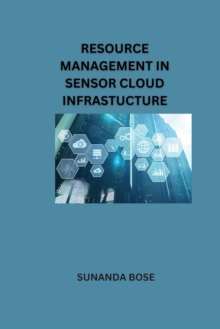Resource management in sensor cloud infrastructure refers to the systematic allocation, monitoring, and optimization of resources within a cloud-based environment that supports sensor networks. Sensor cloud infrastructure combines the power of cloud computing with the capabilities of sensor networks, enabling efficient and scalable data processing, storage, and analysis for a wide range of applications, such as environmental monitoring, smart cities, industrial automation, and healthcare.
In the context of resource management, the primary goal is to ensure optimal utilization of available resources while meeting the requirements of sensor-based applications. This involves various tasks and considerations:
1. Resource Allocation: Resource management involves assigning appropriate resources to sensor nodes or tasks based on their specific requirements. This includes computing resources (such as CPU, memory, and storage) as well as network bandwidth. Allocation decisions may consider factors like node capabilities, data processing requirements, communication patterns, and energy constraints.
2. Load Balancing: Efficient resource management aims to distribute the workload evenly across the sensor cloud infrastructure. Load balancing techniques dynamically allocate resources to sensor nodes or tasks to avoid overloading certain nodes while underutilizing others. Load balancing promotes optimal resource utilization, improves system performance, and enhances the overall responsiveness of the infrastructure.
3. Scalability: Resource management must facilitate the scaling of the sensor cloud infrastructure to accommodate growing sensor networks and increasing data volumes. This involves adding or removing resources dynamically, such as provisioning additional virtual machines or storage capacity, to ensure the system can handle the expanding workload effectively.
4. Monitoring and Optimization: Continuous monitoring of resource usage and performance metrics is crucial for effective resource management. Real-time monitoring enables administrators to identify bottlenecks, detect anomalies, and make informed decisions to optimize resource allocation. Optimization techniques can include task scheduling, data compression, data caching, and data aggregation to reduce resource consumption and enhance overall efficiency.
5. Energy Efficiency: Sensor nodes often operate on limited battery power, so resource management strategies should aim to maximize energy efficiency. This may involve techniques like sleep scheduling, adaptive sampling rates, and energy-aware task allocation to minimize energy consumption and extend the lifespan of sensor nodes.
6. Fault Tolerance and Reliability: Resource management should account for failures or malfunctions in the sensor cloud infrastructure. Redundancy mechanisms, fault detection, and fault recovery strategies can be employed to ensure uninterrupted operation and maintain the reliability of the system.
Overall, resource management in sensor cloud infrastructure plays a critical role in optimizing performance, scalability, energy efficiency, and reliability. It enables the efficient utilization of resources while meeting the demands of sensor-based applications, ultimately enhancing the value and effectiveness of sensor networks in various domains.

